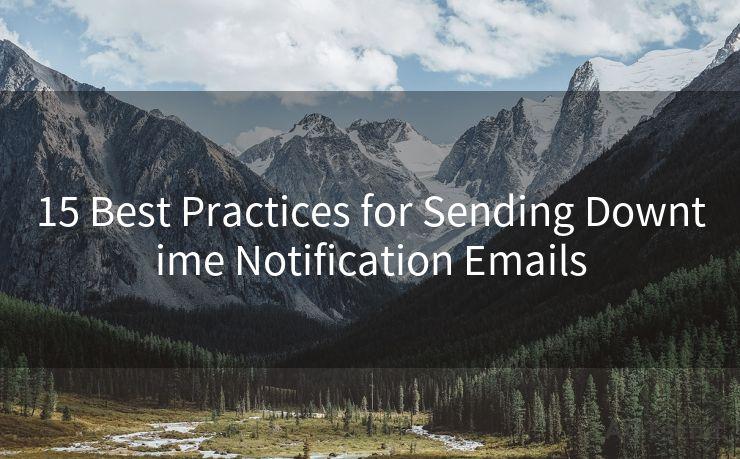15 Best Practices for Sending Downtime Notification Emails




In the digital age, downtime can significantly impact user experience and business operations. Promptly informing users about scheduled or unplanned downtimes through notification emails is crucial. Here are 15 best practices for crafting effective downtime notification emails that keep your users informed and engaged.
1. Clear and Concise Subject Line
Start with a subject line that clearly communicates the purpose of the email. For example, "Scheduled Maintenance Notification" or "Unplanned Downtime Alert".
2. Personalization
Personalize the email by addressing the user directly. Use their name if possible and tailor the content to their specific needs or usage patterns.
3. Explain the Reason for Downtime
Provide a brief explanation of why the downtime is necessary, whether it's for scheduled maintenance, updates, or an unexpected issue.
4. Downtime Duration and Timing
Specify the exact start and end times of the downtime, including the time zone. This helps users plan around the interruption.
5. Impact on Services
Describe which services or features will be affected by the downtime. Be specific about which functionalities will be unavailable.
6. Alternative Solutions
If possible, offer alternative ways for users to access services or information during the downtime.
7. Apologize for the Inconvenience
Acknowledge the inconvenience caused by the downtime and apologize for any disruption.
8. Contact Information
Provide a way for users to contact support if they have questions or concerns during the downtime.
9. Use Plain Language
Avoid technical jargon and write in a way that is easily understood by all users, not just the technically savvy.
10. Design for Mobile
Ensure the email is mobile-friendly, as many users will access their emails on smartphones.
11. Test the Email
Send test emails to yourself or colleagues to check for formatting, links, and readability before sending it to your entire user base.
🔔🔔🔔
【AOTsend Email API】:AOTsend is a Managed Email Service for sending transactional emails. Support Email Types: reminders, authentication, confirmations, notifications, verification codes, invoices, password resets, account activations, billing statements, two-factor authentication (2FA), and one-time passwords (OTP) emails, etc. $0.28 per 1000 Emails. 99% Delivery, 98% Inbox Rate.
You might be interested in:
Why did we start the AOTsend project, Brand Story?
What is a Managed Email API, How it Works?
Best 25+ Email Marketing Platforms (Authority,Keywords&Traffic Comparison)
Best 24+ Email Marketing Service (Price, Pros&Cons Comparison)
Email APIs vs SMTP: How they Works, Any Difference?
12. Follow-Up Communication
After the downtime, send a follow-up email thanking users for their patience and confirming that services have been restored.

13. Provide Updates
If the downtime extends beyond the initial estimate, send timely updates to keep users informed.
14. Avoid Over-Communication
While it's important to keep users informed, avoid sending too many emails, which can be annoying.
15. Learn from Feedback
Encourage users to provide feedback on the downtime process and use this information to improve future notifications.
By following these 15 best practices for sending downtime notification emails, you can ensure that your users are kept informed, engaged, and satisfied, even during periods of service interruption. Remember, transparency and timely communication are key to maintaining trust and loyalty with your user base.




Scan the QR code to access on your mobile device.
Copyright notice: This article is published by AotSend. Reproduction requires attribution.
Article Link:https://www.mailwot.com/p5274.html



